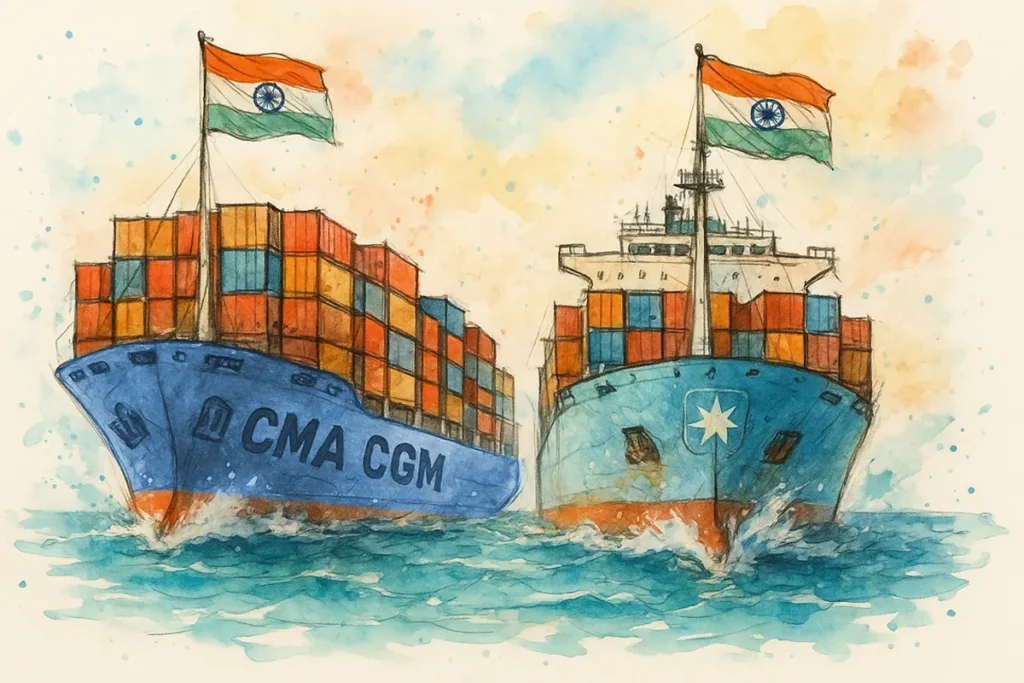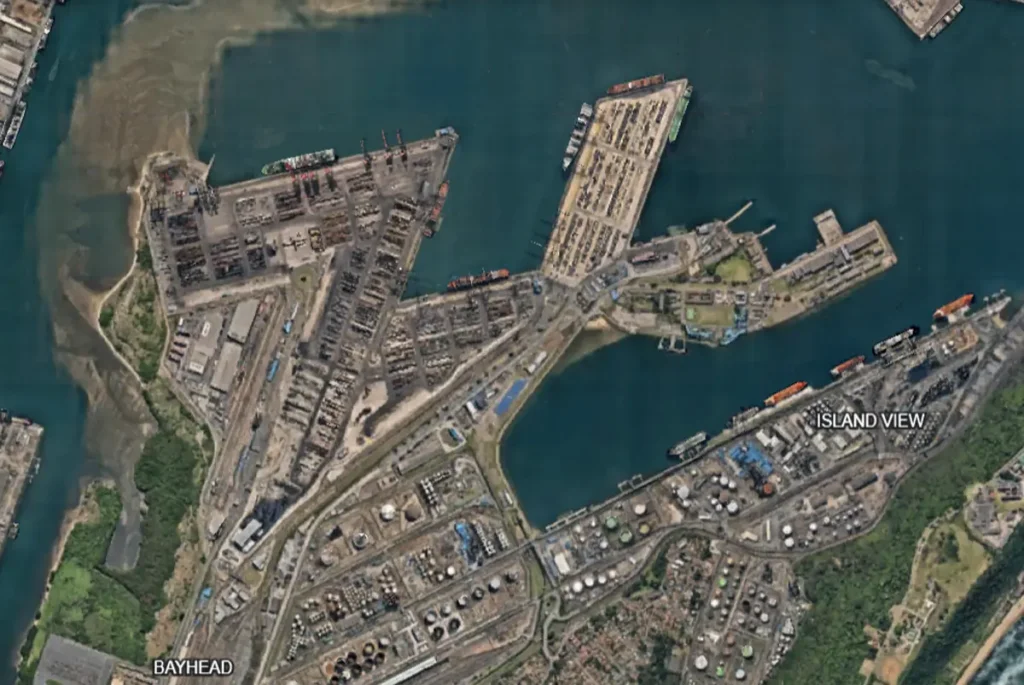2024 was a year of evolution, not just for global supply chains but also for the criminals who stalk them.. The recently released 2024 Cargo Theft Report from TT Club and BSI Consulting paints a striking picture of a world where deception is digital, cargo theft is strategic, and nowhere is truly safe..
So, what exactly happened last year..?? Let’s dive into some of the most shocking, sophisticated, and revealing insights from the global cargo crime scene..
Cargo thieves got smarter—much smarter
2024 saw a sharp spike in strategic cargo thefts, especially in the United States, where they now account for 18% of incidents.. These aren’t your run-of-the-mill hijackings.. These are criminals impersonating freight companies, forging documents, and even using AI to manipulate bills of lading and orchestrate complex phishing scams..
In some cases, all it took was a fake email and a bit of insider intel for entire shipments of electronics, pharmaceuticals, or food products to vanish without a trace..
“Internet-enabled crime has also emerged as a significant facilitator of cargo theft. Criminals are utilizing artificial intelligence (AI) to create phishing emails, deep fakes, and malware aimed at accessing sensitive freight information.” – TT Club Report
What’s getting stolen—and where..??
Globally, food and beverage cargo topped the list of most stolen goods at 22%, followed by agriculture (10%), electronics (9%), and fuel (7%).. Trucks remained the most vulnerable mode of transport, targeted in 76% of all thefts..
The risk hotspots were a who’s who of global logistics hubs: Brazil, Mexico, the U.S., India, Germany, and South Africa..
Across geographies, the how of theft varied dramatically:
- South America: Violent hijackings, especially in Brazil, where 68% of regional incidents occurred.. GPS jammers, armed gangs, and trucker intimidation are now standard playbook items..
- South Africa: Insider-enabled metal thefts have surged, with gangs using inside info to intercept cargo en route to ports.. Truck hijackings remain disturbingly common..
- India: A toxic mix of pilferage, employee collusion, and targeted pharmaceutical thefts made for a dangerous cocktail.. At least 26% of thefts involved insiders..
- Europe: So-called “rollover thefts”—where thieves access cargo mid-journey without drivers noticing—are on the rise.. Slash-and-grab attacks and hijackings during driver rest stops remain rampant..
Spotlight on the U.S.: Trains now on the radar
Here’s a twist—rail thefts in the U.S. doubled from 3% in 2023 to 6% in 2024.. Organized groups (allegedly including cartels operating out of Sinaloa, Mexico) now target in-transit trains, manipulating brake systems and following them with vans to extract stolen goods..
It’s not just urban areas.. The rise in rural thefts highlights a disturbing trend: low oversight, minimal security, and long dwell times make trains easy pickings..
Why cargo theft matters
Cargo theft isn’t just an operational nuisance.. It’s a billion-dollar criminal enterprise, eroding profit margins, delaying deliveries, and endangering people.. As we move deeper into the digital age, the convergence of technology and theft demands a new level of vigilance..
With threat actors mimicking legitimate players and hiding behind the screen of AI, trust has become a supply chain’s most precious currency.. And losing that trust—be it with customers, regulators, or insurers—can cost more than the cargo itself..
What can you actually do about it..??
You’ve seen the trends—strategic thefts, insider collusion, AI scams, and cargo going missing mid-transit.. In freight, logistics, or shipping, this isn’t just a risk—it’s a daily operational reality.. But what can we do about it..??
🔍 1. Assess operational profile
Before you build any defence, know what you’re protecting..
- Understand the typical cargo volumes, pickup and drop-off locations, seasonal peaks, and average number of hauliers used..
- Identify whether you’re relying heavily on load boards and evaluate if that introduces added risk..
- Verify that cargo values match contractual thresholds before assigning loads..
The aim is to map your baseline so you can identify anomalies fast..
📝 2. Strengthen due diligence procedures
No shortcuts here—screen everything and everyone..
- Implement a tiered vetting process based on your company size and risk appetite..
- Create a 24/7 escalation plan for decision-making, especially during weekends, holidays, or peak shipping periods..
- Limit your network to a smaller set of “approved” hauliers, rather than hundreds you can’t monitor properly..
Consistency beats complexity every time..
🚛 3. Vet your transport partners thoroughly
Dig deeper than just names and insurance certificates..
- Use data from RMIS, FMCSA, or Safer databases to verify carrier legitimacy..
- Ask for tractor VINs, motor carrier numbers, trailer details, and equipment specs up front..
- Apply rules-based filters, like rejecting carriers with less than 12 months in business or recent record edits..
This makes impersonation significantly harder..
🧠 4. Educate your teams on red flags
Criminals thrive on routine, fatigue, and blind spots..
- Train staff to spot signs like free email accounts, mobile-only contact numbers, and high-capacity offers from unknowns..
- Be cautious of double brokering, suspiciously long hauls, or commodities with high resale value like electronics, fuel, or copper..
- Always question sudden operational changes, especially when routes or delivery instructions are modified..
🧑💻 5. Safeguard digital communications
AI-driven cybercrime is now a real threat vector..
- Avoid sharing sensitive data like routing plans, driver info, or load timing unnecessarily..
- Watch out for email spoofing, typo-squatting, or instructions redirecting replies to a secondary address..
- Consider adding geo-blocks to email traffic and implementing DMARC/SPF protocols to stop domain imitation..
If you rely on digital systems, you need digital defence..
🏪 6. Secure inventory and warehouse flows
Internal theft can bleed you dry if unchecked..
- Tighten access rights to inventory systems and restrict manual overrides..
- Use rolling stock checks and avoid bulk data entries during goods receipt..
- Always scan goods into inventory individually—don’t let paper-based reconciliation delay issue detection..
🧾 7. Rethink how you handle delivery and paperwork
Don’t let your proof of delivery become a loophole..
- Match signed delivery notes against actual received quantities..
- Watch for altered PDFs, inconsistent consignee instructions, or unexplained route changes..
- Never rely on a single layer of documentation—cross-verify everything..
🛑 8. Treat load boards with caution
Open platforms can be a goldmine for scammers..
- Only post loads with minimal exposure of details—don’t advertise everything upfront..
- Avoid offers that are too cheap, too fast, or too easy—especially from new carriers..
- Always vet hauliers you’ve never worked with outside the platform..
📡 9. Use technology—but don’t set and forget
Having tracking systems is one thing—knowing what to do when alerts fire off is another..
- Set clear rules for real-time alert monitoring, and define response protocols by time of day, cargo type, and location..
- Assume that criminals are probing your systems—if your alerts don’t lead to action, they’ll keep testing boundaries..
- Consider ISO-compliant seals, mobile patrol units, or dual-device GPS if the cargo is high value..
🚩10. Watch out for Red Flags
Some of the red flags supply chain players to watch out for includes
- Free email accounts (like gmail, hotmail etc)
- Carriers without websites or using only mobile numbers
- Spot contracts and unusually high-value offers
- Changes to trucking company details on FMCSA records
And here’s the kicker: Insider threats are everywhere.. Whether it’s a rogue warehouse employee, a complicit dispatcher, or a trucker staging a hijack, the enemy may already be inside the gate..
While each of the above strategies may seem like a checkbox, together, they create a resilient framework for protecting not just cargo, but your reputation, relationships, and bottom line..
Download the full TT Club & BSI 2024 Cargo Theft Report to get detailed region-by-region breakdowns, case studies, and mitigation strategies..














